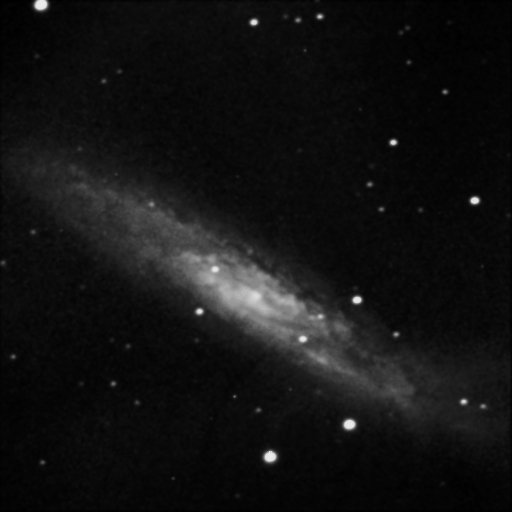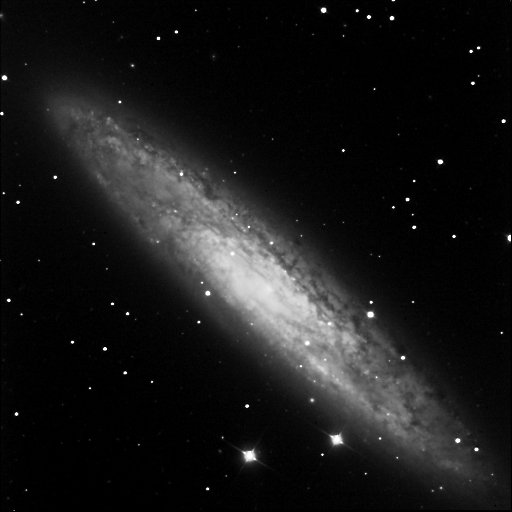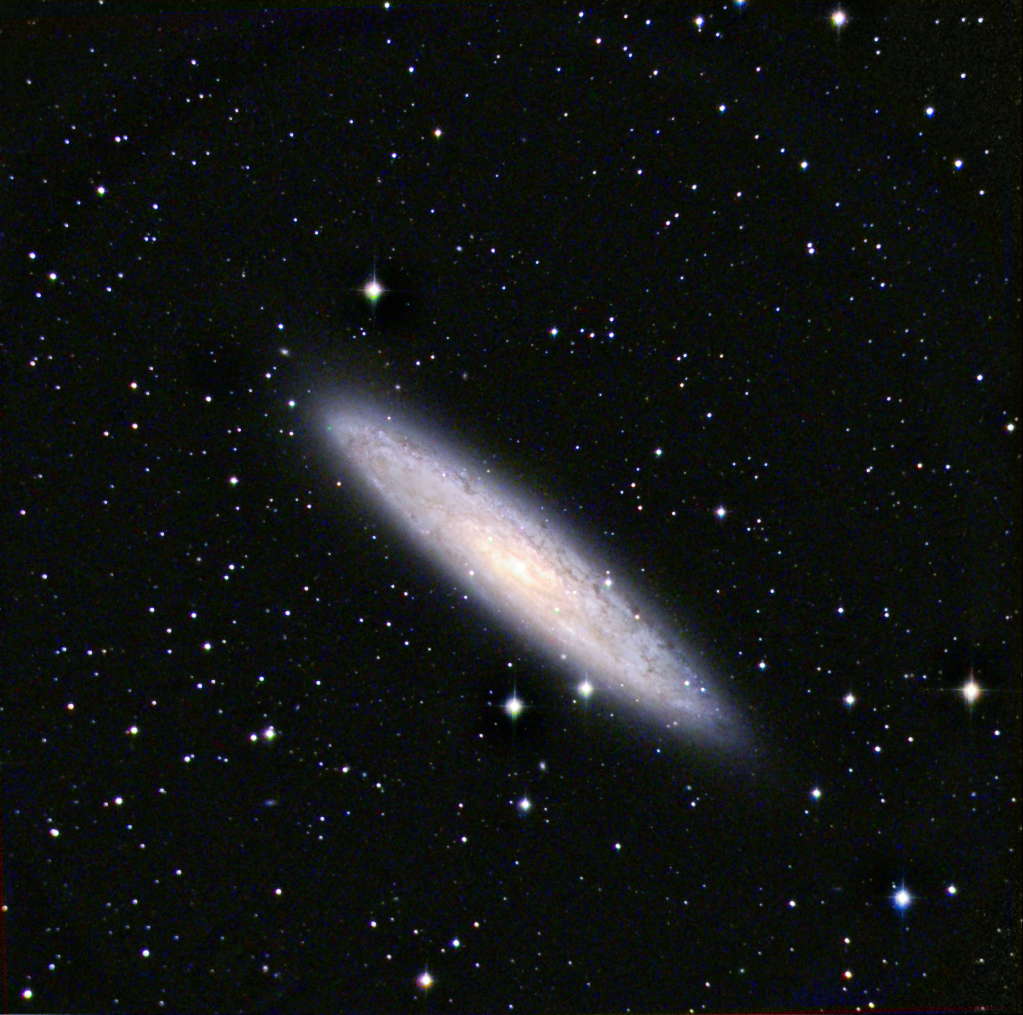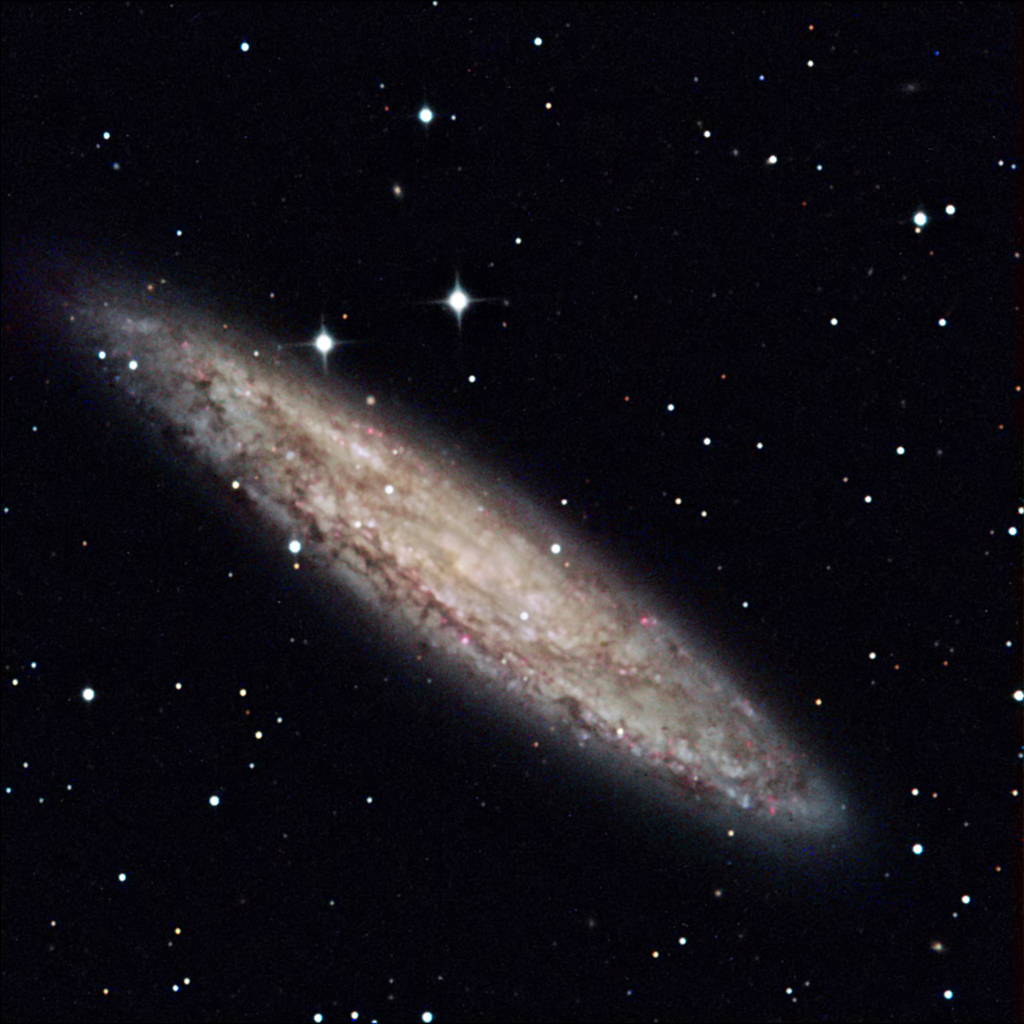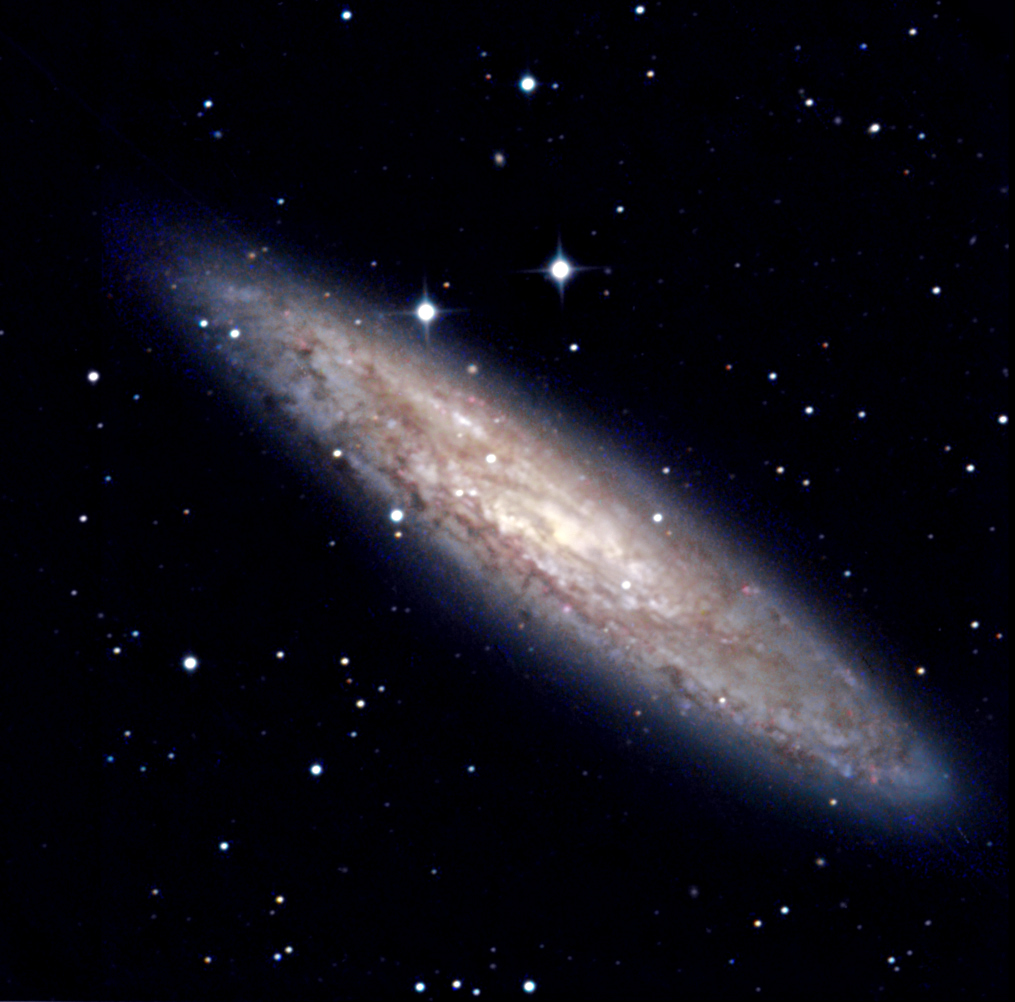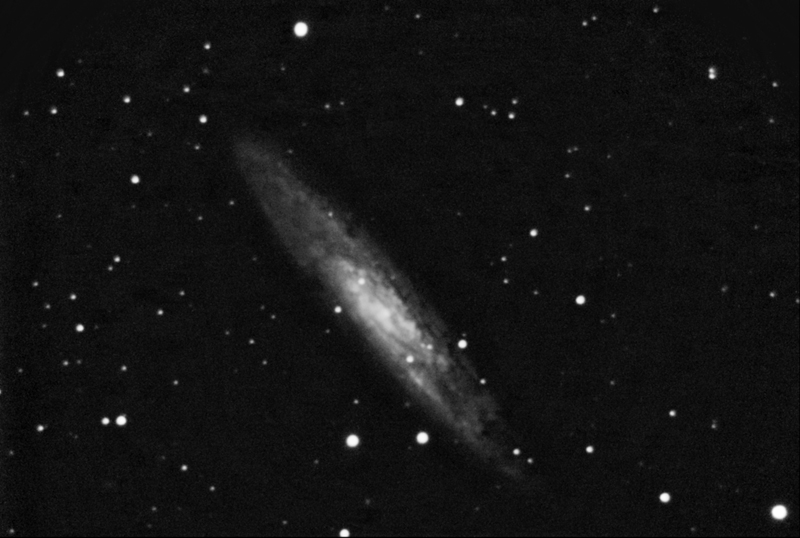
Combination of 5, 2 minute exposures, SBIG ST-8E CCD.
8" f/6.3 schmidt-cassegrain telescope at prime focus.

NGC 253 is one of the best galaxies in the sky for small telescopes, especially for southern hemisphere observers where it appears high in the sky. It is situated in Sculptor about 4 degrees south of the bright star Diphda. and it is the brightest member of the Sculptor group of galaxies. It is easily visible in binoculars and has been observered with the naked eye under very dark skies. In an 8" telescope, it appears as a very elongated patch of light. Low magnification is required to fit all of the galaxy in the one field of view as it is quite large. In a 12" telescope some mottling of the galaxy can be discerned.
